Making fresh pasta at home is very rewarding but it takes some effort to roll it well, and it takes time to knead, roll, and cut it. I must admit I enjoy it; it relaxes me to use my rolling pin and board while memories come back…..Grandma and mom often made pasta at home, and I helped them turn the handle of the machine. I was thrilled when dad came home, and I could tell him I made pasta!!
Unfortunately, we no longer have all the time we used to have, but technology comes to our aid! Now I make homemade pasta with a pasta maker!
We are pasta lovers, so we eat it almost every day. With the pasta maker, I can have fresh extruded pasta, with or without eggs, in five minutes. Moreover, this pasta is much lighter and more digestible than others, and being able to choose which flour to use is no small thing!
With the quantities indicated in this recipe, about 300 grams (10.5 oz) of pasta are made.
I use the Philips pasta maker and find it very good. Upon purchase, I also received eight discs, and today we will use one of these to make spaghetti. The use is very simple and intuitive; the machine does everything by itself, you just have to put the ingredients in.
Let’s now see together, step by step, how to do it.
To receive the recipe of the day for free
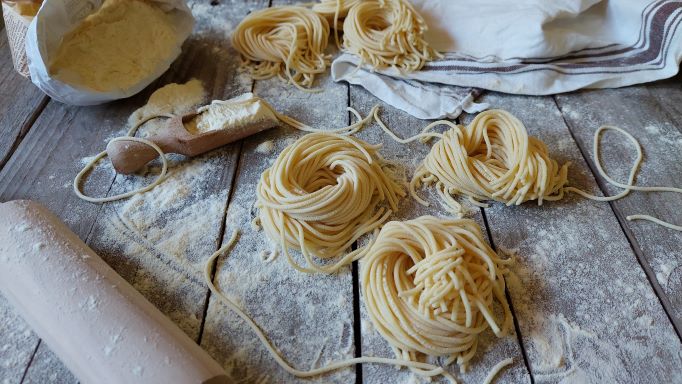
- Difficulty: Very Easy
- Cost: Very Cheap
- Preparation time: 5 Minutes
- Portions: 4
- Cooking methods: No Cooking
- Cuisine: Italian
- Seasonality: All Seasons
- Energy 210.00 (Kcal)
- Carbohydrates 43.75 (g) of which sugars 0.63 (g)
- Proteins 6.56 (g)
- Fat 0.63 (g) of which saturated 0.00 (g)of which unsaturated 0.00 (g)
- Fibers 1.56 (g)
- Sodium 0.90 (mg)
Indicative values for a portion of 75 g processed in an automated way starting from the nutritional information available on the CREA* and FoodData Central** databases. It is not food and / or nutritional advice.
* CREATES Food and Nutrition Research Center: https://www.crea.gov.it/alimenti-e-nutrizione https://www.alimentinutrizione.it ** U.S. Department of Agriculture, Agricultural Research Service. FoodData Central, 2019. https://fdc.nal.usda.gov
Ingredients
Below you will find links to some ingredients used to make the recipe
- 2 cups semolina flour of durum wheat
- 3/8 cup water
Tools
Below you will find links to purchase some useful tools for the recipe
- 1 Pasta Machine
- 1 Pasta Drying Rack
- 1 Dryer
- 1 Dough Cutter
- 1 Disc
Steps
Let’s start!
Making homemade pasta with a pasta maker is a piece of cake. With the machine, you will also receive a handy instruction/recipe booklet with many useful tips for making your fresh pasta.
Today, I will show you how to make simple spaghetti without eggs, using only semolina flour and water.
My pasta maker is the one with an integrated scale that weighs the flour by itself and indicates the amount of liquid to add.
First, we need to assemble our pasta maker. Follow the instructions and put the transparent container in place, insert the kneading hook by fitting the square part into the front hole, then insert the front mask and insert the chosen disc, which should be inserted following the indicator on top. When inserted, it should click, but I confess not all discs do that for me!
Optionally, the disc can be slightly oiled before inserting it to facilitate the pasta’s exit, but it is entirely optional.
After inserting the disc, we can close with the outer mask by screwing the two screws in front.
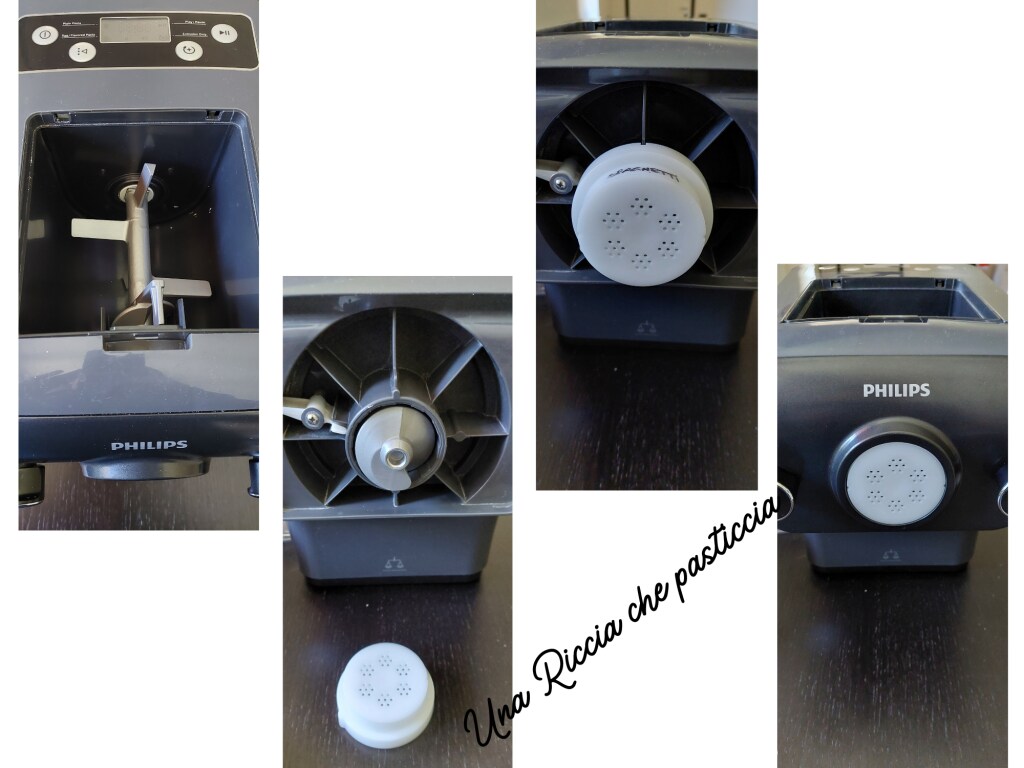
Press the machine’s power button and select “with egg” or “without egg” by simply pressing the button with the triangle and three dots. In this case, we will select “without egg,” so the ear with the dots next to the triangle shape.
At this point, the machine (without the lid) will ask you to add the flour to weigh it. Once weighed, add the lid, and it will indicate the necessary amount of liquids.
Press the play button and, only after starting the kneading, begin to add the water.
The dough will appear crumbly and not mixed; it should be like that.
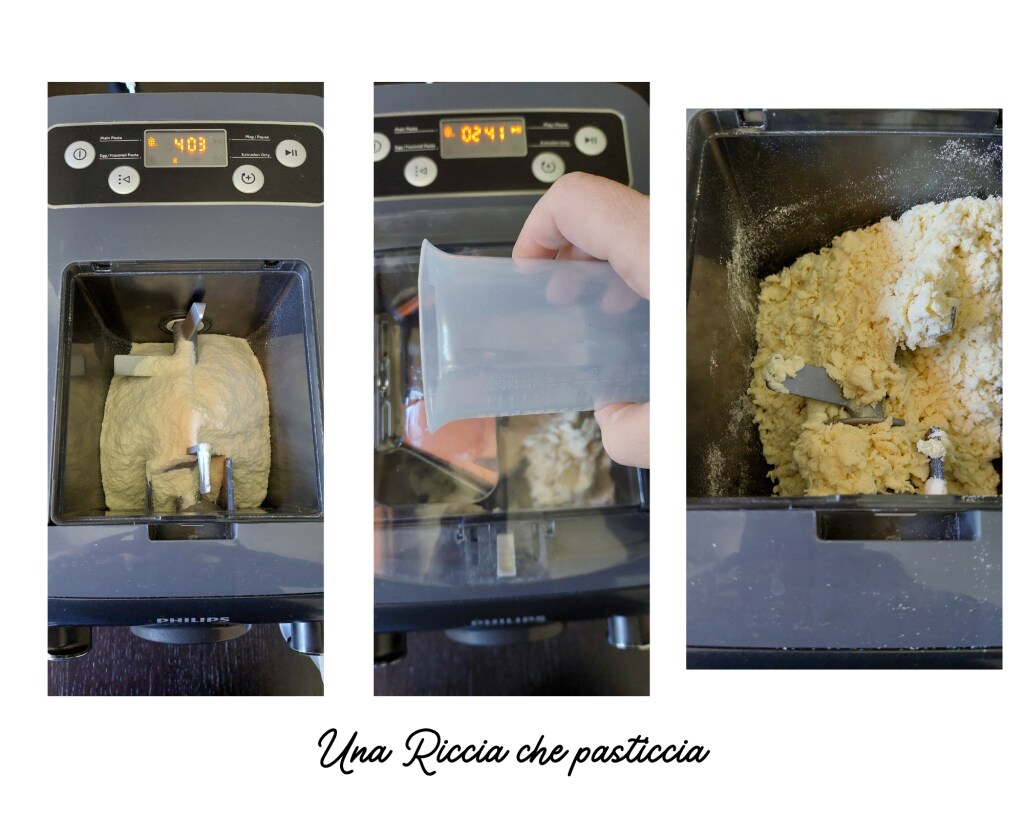
The machine will knead our ingredients for three minutes, then it will start extruding, and we will only have to cut to the desired length.
The first part that is extruded is always a bit ‘wrinkled,’ so I recommend cutting it and putting it back in the machine to be extruded again.
Do not compact it with your hands; otherwise, the internal paddles will have difficulty taking it.
Place the pasta on a tray or cutting board.
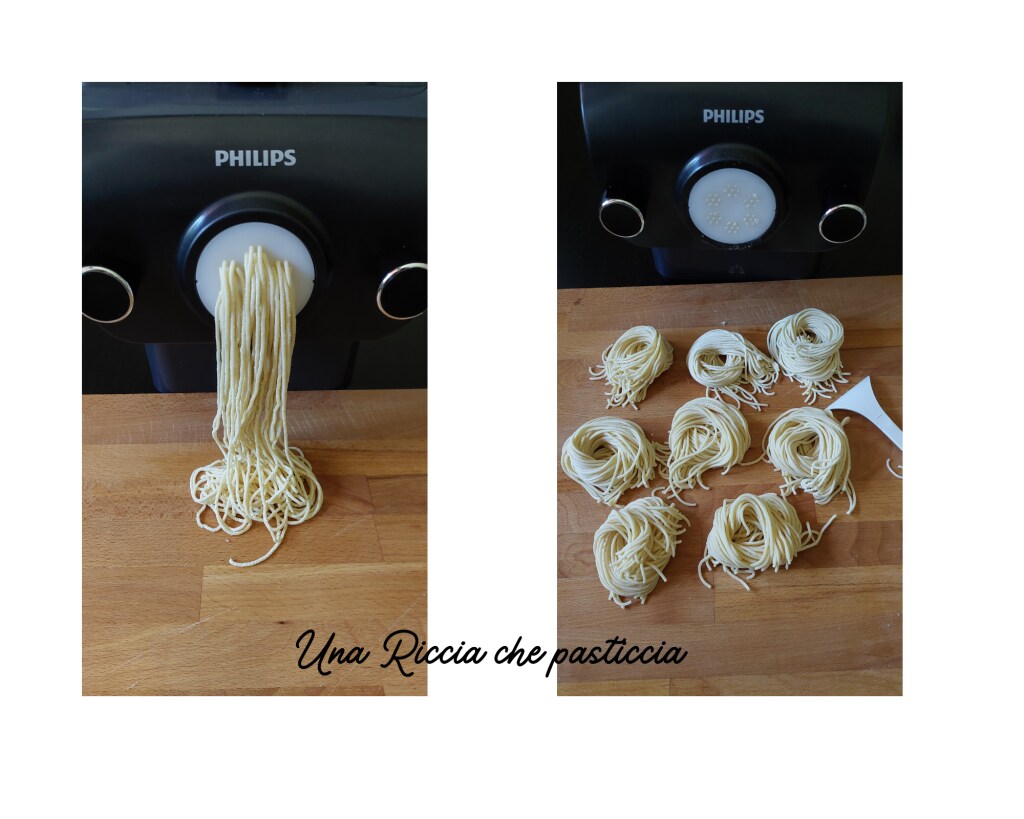
Homemade pasta with a pasta maker takes three or four minutes to cook, depending on the chosen format.
Sometimes it may be useful to do a double knead or simply let the pasta rest before extruding. To let it rest, just press the pause button when there are a few seconds left before the end of the three minutes of kneading.
For a double knead, press pause when there are a few seconds left and turn off the machine, turn it back on, reselect without eggs, and hold down the play button for about five seconds. At this point, the machine will knead for another three minutes and then extrude.
Another useful thing to know is that sometimes it may be necessary to just extrude, perhaps a piece of dough left at the end. Just press the dedicated button with the + and the round arrow.
I usually make it to eat right away, but you can also prepare it in advance and let it dry slightly. In this case, I recommend using special drying trays or placing absorbent paper both under and over the pasta, and maybe turn it over every now and then.
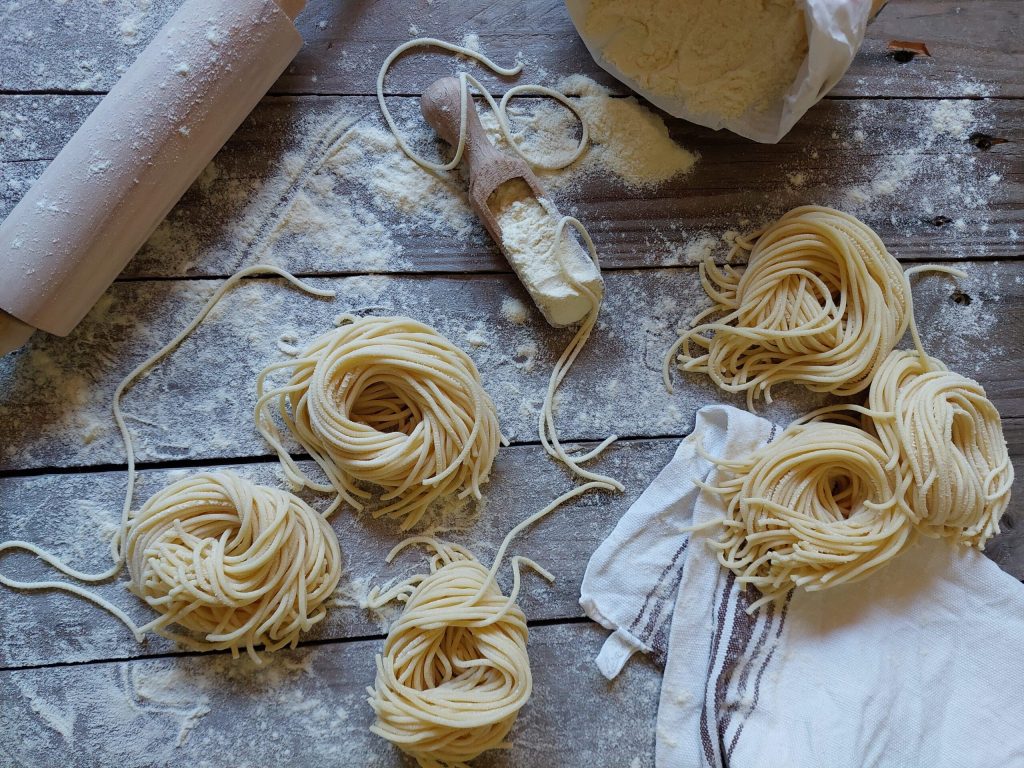
Una Riccia recommends
With the pasta maker, it is possible to make many pasta shapes using the different discs available on the market. Personally, I prefer to use discs that extrude a larger amount of pasta at a time to avoid overstressing the pasta.

